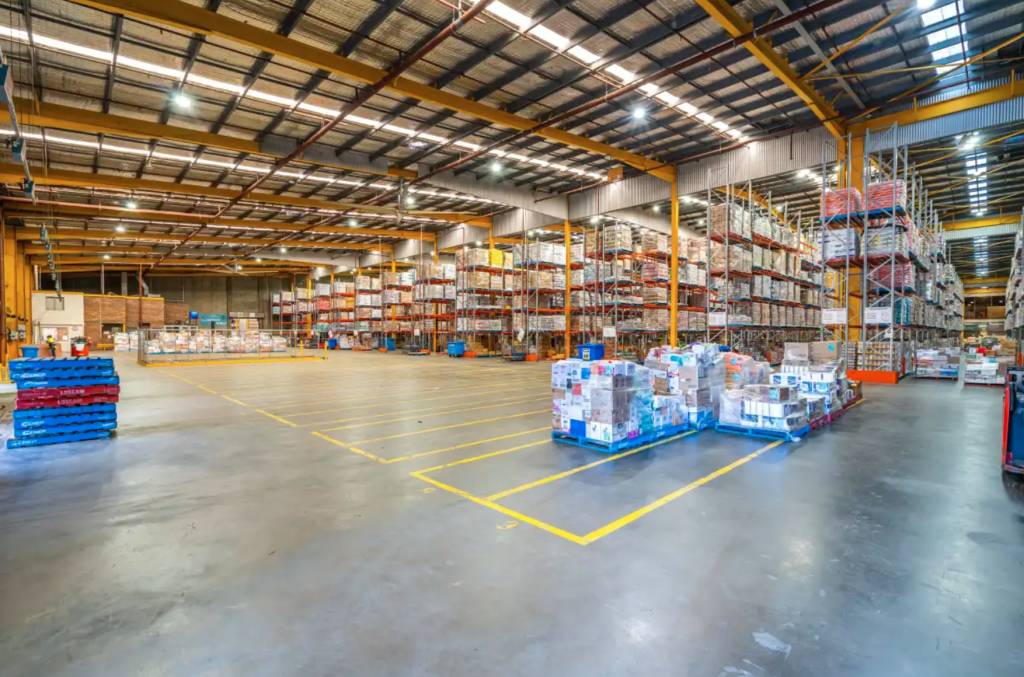The boom in e-commerce and the increasing impatience of consumers expecting same-day delivery of goods ordered online is set to fuel another year of record take-up of industrial space in 2021 as companies look to optimise and automate their supply chains.
According to Colliers International, for every $1 billion spent on online sales, about 85,000sq m of warehouse space is needed.
“We are forecasting online sales to grow by $12.8 billion in 2021, which would result in demand of about one million square metres of warehouse demand from e-commerce alone in 2021,” said Malcom Tyson, managing director of industrial at Colliers International.
While mega-shed deals like the 200,000 square metre Sydney fulfilment centre Goodman is building for Amazon helped lift the gross national take-up of warehouse space to a record 2.86 million square metres in 2020, (according to JLL figures) Travis Erridge, managing director of logistics consultancy TM Insight, believes 2021 could see a greater proliferation of regional and inner suburban fulfilment centres closer to end customers in “hub and spoke” supply chain models.
“This means a greater industrial footprint and increasing demand for warehousing in capital cities and in the inner city areas,” Mr Erridge said.
“Gone are the days of overly lean supply chains and instead flexibility is key. Businesses need an agile supply chain that can cope with new demands of the consumer.”
Alongside this expansion of warehouse networks TM Insight believes there will be an increasing uptake of automation, though it will be used more selectively as part of “fit-for-purpose” solutions.
“For organisations where there is more volatility in their inventory and risk involved, this may lead them away from full automation, whereas in the past this may have been driven purely by financial metrics,” he said.
Double-digit returns
“More organisations may look at adopting mobile automation, which is flexible and scalable, in the sense that you add more or less robots according to how your business is performing.”
On the investment front, the logistics sector is also expected to boom again as institutional and private investors look to further reweight their portfolios to an asset class which delivered double-digit total returns during the pandemic – while retail property returns turned sharply negative.
“As at December 2020, there is approximately $26 billion in capital looking to invest in the sector and broadly spread between offshore and domestic institutions as well as private investors,” said Mr Tyson.
“Given this, additional assets from corporate groups are expected to be brought to market in 2021 as groups look to capitalise on the continued strength of the industrial and logistics market.”
This includes a ground-breaking multibillion-dollar portfolio of 45 mostly east coast logistics assets being shopped around by US giant Blackstone, according to The Australian Financial Review’s Street Talk column.
JLL is forecasting national average prime yields in 2021 to continue to compress to sub-5 per cent by the end of this year (they tightened 41 basis points to 5.06 per cent in 2020), and sale volumes to match the $4.2 billion achieved in 2020.
“Offshore capital sources will be an active buyer cohort for the Australian industrial & logistics sector in 2021,” said Sass J-Baleh, director of research at JLL.
“Australia is the beneficiary of two major investment themes – higher allocations to real assets and a portfolio reweighting towards Asia Pacific. The expectation that Asia Pacific economies will recover more quickly than Western countries is an additional driver,” she said.
